At The Art of Catering Food in Salt Lake City, August 2015, guests were dazzled by the many outdoor cooking techniques exhibited at the Boots, Buckles and BBQ evening party put together by the team at Culinary Crafts.
In a session the following day, Ryan and Caleb Crafts broke down some of the techniques they employed, and also offered thoughts on why guests love a good meal—and a show.
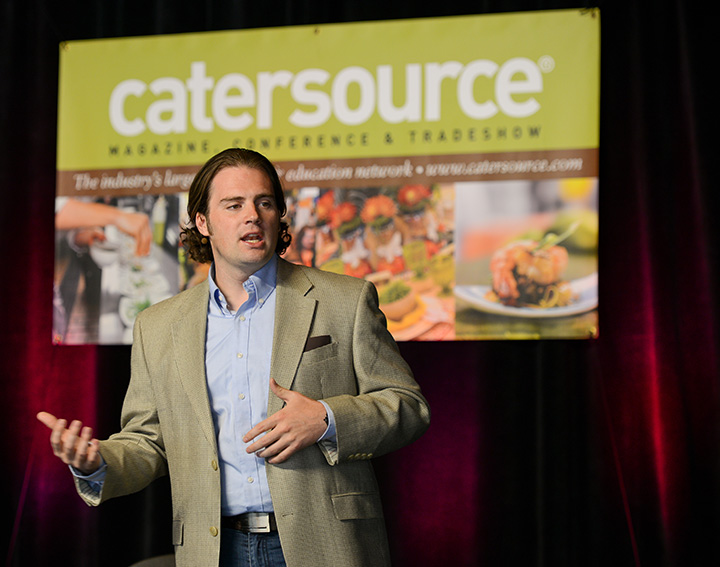
Ryan Crafts, presenting at The Art of Catering Food 2015
“One of the reasons I like to cook with live fire is because it takes the food to a new level,” said Ryan. “You’re getting a better food product, you are getting a better flavor, but also when we have open flame—we are providing something exciting and appealing to the other senses as well. Guests walk in and before they even see anything, they can smell that something is grilling.
“And then they get a little closer and see the big line-up of kettle grills and see the chefs working over the fire. They come a little closer and they can hear the charcoal crackling. And then, finally, after they have had these sensory experiences, they get to round it out by tasting the food. Using live fire brings an element of excitement to heighten the experience of the food.”
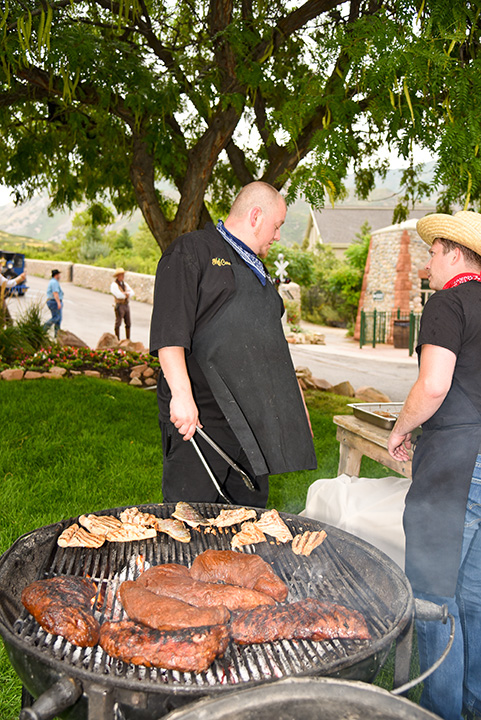
Grilling
More than anything else, the Crafts brothers said, they grill. “We have about 12 kettle grills and use them for everything from trout to steak to chicken to vegetables. We do a lot of flank steak.”
Flank steak is fun to grill because with a large kettle surface they can lay the whole muscle down—something guests love to see. Chefs carve on the spot and also talk about the food. “It’s very important,” said Ryan, “that if you are going to the effort to grill and manage an open flame for a large crowd, you need to have trained staff who talk intelligently and passionately about the food, about why it’s delicious, and why grilling it is so fun.”
“We cook a lot of sausage too,” said Caleb. “It’s an extremely effective way to put a very high quality product on the plate very efficiently and without a lot of staff.”
A word about efficiency: the Crafts brothers suggest putting the uncooked sausages in a large kettle full of beer on an open flame. As the sausages simmer, they become fully cooked while guests are arriving and mingling. The chefs on site are not worrying about food safety, temperature, or timing of the meal because the sausage is now fully cooked. “Chef will pull that sausage out of the beer dripping wet and put it right on the fire,” said Ryan. “I can train anyone in 20 minutes how to grill that sausage. All I am worried about at this point is making it look right. Grill it on medium high heat until it has beautiful marks all over it. I can feed massive groups of people quickly and with relative ease. Things like this—things that make your job easy but also enhance the food quality and add value to the guest experience are where you make your money.”
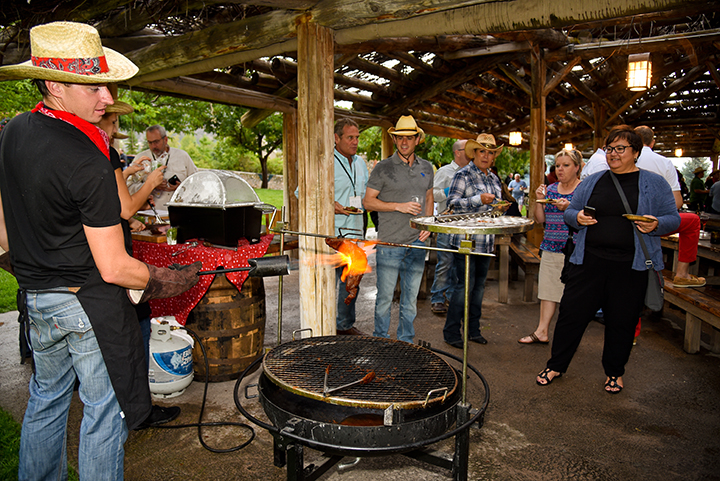
Torching
Blowtorches are a terrific and dramatic way to impress guests and finish up a product. For example, cook beef sous vide in a staging area to an ideal temperature, then bring it out and put a sear on it with the blowtorch. “This goes really quickly and can handle plenty of guests, because I am not actually cooking the beef from raw,” said Caleb. “We’re just putting a crust on it for a fun show—and when you sell a show, it’s upsell.”
The team at Culinary Crafts also uses handheld culinary torches, especially when indoors. Their tip? Because the beef, for example, is already cooked to the precise temperature you want, don’t “wave” the torch back and forth over it, as it just gets the meat hotter. Hold that torch in one spot and sear until a crust forms and then move on.
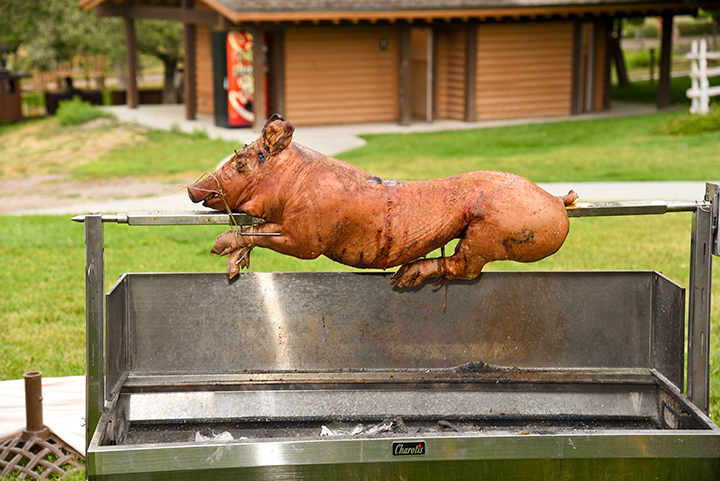
Open spit/rotisserie
At Boots, Buckles and BBQ, Culinary Crafts put a whole pig, brined and rubbed, on a spit—for show. The pork was served the next day at lunch. But earlier that day, they prepared pulled pork more cost effectively for the 300 guests. Their tip: You can upsell the chef/grill master, the whole pig, and the spit, even if it is just for show. It’s a huge profit center and it’s very easy to do. But to the customer, they say, it’s worth the added expense.
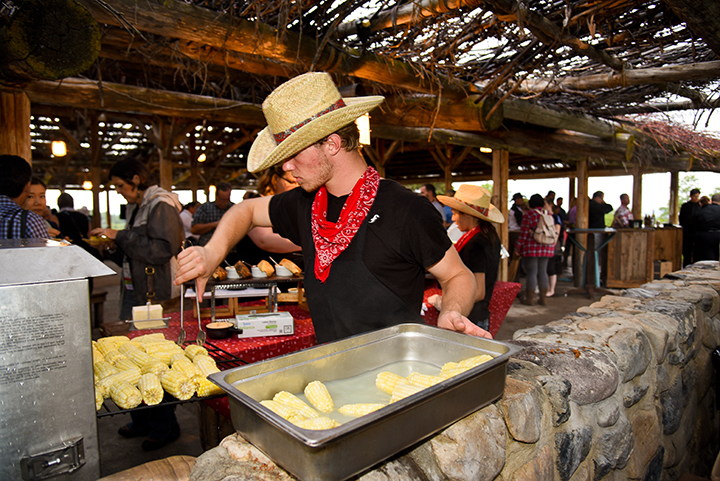
Smoking
Smoking is tricky on the road and expensive, they admit. However, smaller smoker units are still very effective. At the party, for example, they used a smoker to make corn on the cob. They blanched the corn prior, transported it up to the event cold, then brought it to temperature in the smoker and put a light crust of smoke on it with butter. Delicious!
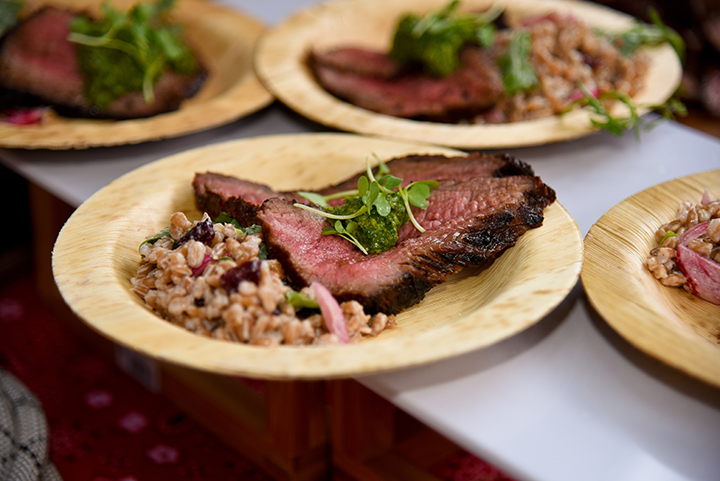
Precision Cooked & Chef Torched Tri-Tip
Ingredients
Beef tri-tip (grass-fed preferred)
Compound butter of your choice (chipotle lime, smoked paprika, maple bourbon, sage garlic, for example)
Method
1. Rub the compound butter over the entire surface of the beef. Vacuum seal in a bag appropriate for sous vide cooking.
2. Cook in a circulating water bath at 137 degrees F for 2.5 hours. Remove from the bag and apply a sear with a torch. When torching, apply the heat directly to a single area until seared, and then move on. Don’t wave the torch back and forth, as it will continue to cook the beef more than sear it.
3. Allow the beef to rest. Carve and serve.



